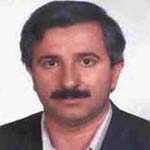Assessing the quality of life by emphasizing urban regeneration from the viewpoint of urban authorities (case study: Tehran municipality's 15th region)
Author(s):
Article Type:
Research/Original Article (دارای رتبه معتبر)
Abstract:
Introduction
Life in today's cities is formed by interactions among different environmental, social, economic, infrastructural, health, security, political, and cultural conditions. The result of these interactions shape the quality of urban life. The quality of life is the better living conditions in which balance, harmony, desirability and fair equality are institutionalized. In general, the quality of life is evaluated by two objective and subjective perspectives. Mental indicators are mainly based on psychological responses and objective indicators are based on the measurement of physical quantities. One of the most important topics considered by managers and urban planners is the discussion of achieving urban welfare and improving citizens’ life quality.The importance of this research is that, it examines the views and performance of authoritiesand urban managers of Tehran’s 15th region, on the level of citizens' satisfaction with the quality of life in the region.
Study Area
The study area of region 15 of Tehran includes 7 districts and 20 neighborhoods. From the north it is confined by Ghasre-Firoozeh, Ahang highway, Khavaran and Shoush Sharghi avenues and from the west by Fadaiyan Islam Avenue. It stretches from the south to Dolatabad Avenue, Bibi Shahrbanu Mountain and Cement Factory, and from the east to the eastern mountains of Tehran and the eastern part of the Afsariyeh lands.
Materials and Methods
In this study, two hypothesis were proposed to study the life quality of citizens in region 15. The statistical population included 50 authorities and senior urban managers in region 15 of Tehran. Data gathering has been done by questionnaire with a field method. Then, the hypotheses were tested by Pearson correlation test, T-test andCanonicalcorrelation analysis.Results and Discussion
First hypothesis, as stated in H1 or Hypothesis 1, implies a significant relationship between the dimensions of sustainable regeneration and urban quality of life in Tehran's 15th region. According to the obtained results, the intensity of the correlation is 0.83, the R-Square coefficient is 0.68 and the direction and type of correlation is positive and strong. Therefore it can be concluded that approximately 68% of the impact on the quality of urban life is related to the dimensions of sustainable regeneration (socio-cultural, economic, physical, management and environmental); because the significance level is less than 0.05 score, then H0 is rejected and the first hypothesis and H1 are confirmed.Second hypothesis, as mentioned in H1 or hypothesis 1, the improvement measures carried out in Region 15 were mainly physical and did not improve the quality of citizens’ life. According to the obtained results, Significance levels (sig) are less than 0.05 score; the mean (independent variable) of physical regeneration is 9.46 and the mean (dependent variable) of physical component of quality of life is 22.18. Also, the mean (independent variable) of environmental regeneration is 14.50 and the mean (dependent variable) of environmental quality component of life quality, is equal to 30.52. Therefore, the mean of the environmental components in the two variables (independent and dependent) are higher than their physical components. Since the upper and lower limits of the test are all positive, so H0 is confirmed and the second hypothesis and H1 are rejected.
Conclusion
According to result, the authorities believe that the quality level of citizens’ life in the region is absolute, and they consider their urban management method as appropriate and desirable. So, according to the research achievements, the following items are proposed to improve the citizens’ quality of life:A) Economic dimension:Creating sustainable employment opportunities & increasing per capita income in low quality areas, using the capacities of the private sector or charities to create small businesses for families. This can largely provide income for families.B) Social dimension:Establishment of training classes for various trades and employment, as well as the formation of local associations to facilitate solving the problems of the citizens.
C) Physical dimension:Dedicating resources for education, health, infrastructure services, etc. for low quality areas of the region.
D) Environmental dimension:Seeking the views of locals, especially local experts and elites, in order to come up with effective solutions for improving quality of the environment for citizens.
Keywords:
Language:
Persian
Published:
Journal of Earth Science Researches, Volume:12 Issue: 46, 2021
Pages:
19 to 35
magiran.com/p2307671
دانلود و مطالعه متن این مقاله با یکی از روشهای زیر امکان پذیر است:
اشتراک شخصی
با عضویت و پرداخت آنلاین حق اشتراک یکساله به مبلغ 1,390,000ريال میتوانید 70 عنوان مطلب دانلود کنید!
اشتراک سازمانی
به کتابخانه دانشگاه یا محل کار خود پیشنهاد کنید تا اشتراک سازمانی این پایگاه را برای دسترسی نامحدود همه کاربران به متن مطالب تهیه نمایند!
توجه!
- حق عضویت دریافتی صرف حمایت از نشریات عضو و نگهداری، تکمیل و توسعه مگیران میشود.
- پرداخت حق اشتراک و دانلود مقالات اجازه بازنشر آن در سایر رسانههای چاپی و دیجیتال را به کاربر نمیدهد.
In order to view content subscription is required
Personal subscription
Subscribe magiran.com for 70 € euros via PayPal and download 70 articles during a year.
Organization subscription
Please contact us to subscribe your university or library for unlimited access!



